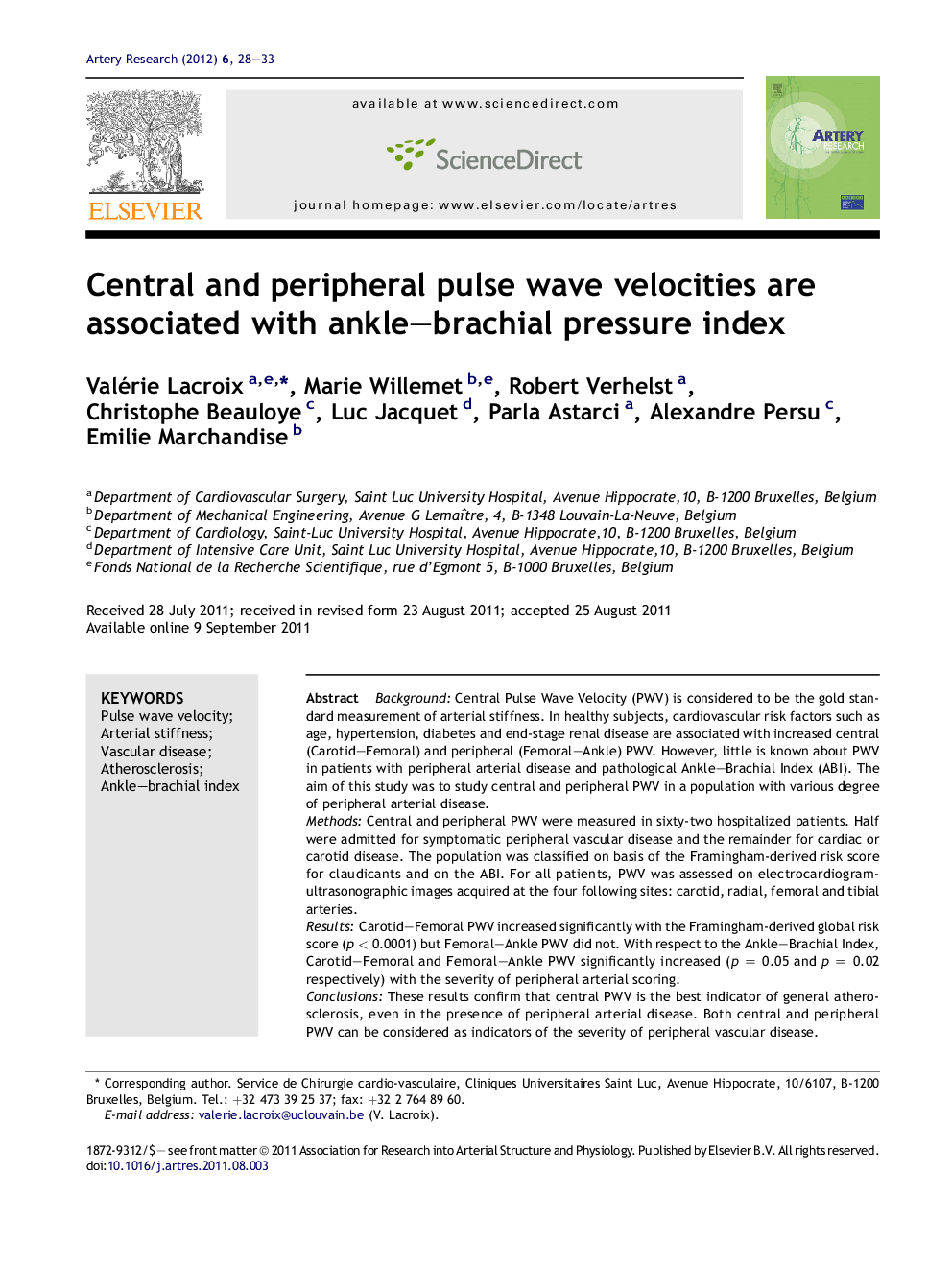| Article ID | Journal | Published Year | Pages | File Type |
|---|---|---|---|---|
| 2892070 | Artery Research | 2012 | 6 Pages |
BackgroundCentral Pulse Wave Velocity (PWV) is considered to be the gold standard measurement of arterial stiffness. In healthy subjects, cardiovascular risk factors such as age, hypertension, diabetes and end-stage renal disease are associated with increased central (Carotid–Femoral) and peripheral (Femoral–Ankle) PWV. However, little is known about PWV in patients with peripheral arterial disease and pathological Ankle–Brachial Index (ABI). The aim of this study was to study central and peripheral PWV in a population with various degree of peripheral arterial disease.MethodsCentral and peripheral PWV were measured in sixty-two hospitalized patients. Half were admitted for symptomatic peripheral vascular disease and the remainder for cardiac or carotid disease. The population was classified on basis of the Framingham-derived risk score for claudicants and on the ABI. For all patients, PWV was assessed on electrocardiogram-ultrasonographic images acquired at the four following sites: carotid, radial, femoral and tibial arteries.ResultsCarotid–Femoral PWV increased significantly with the Framingham-derived global risk score (p < 0.0001) but Femoral–Ankle PWV did not. With respect to the Ankle–Brachial Index, Carotid–Femoral and Femoral–Ankle PWV significantly increased (p = 0.05 and p = 0.02 respectively) with the severity of peripheral arterial scoring.ConclusionsThese results confirm that central PWV is the best indicator of general atherosclerosis, even in the presence of peripheral arterial disease. Both central and peripheral PWV can be considered as indicators of the severity of peripheral vascular disease.
